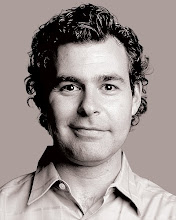.jpg)
This week's cover story of Las Vegas Weekly is my account of visiting the Cirque du Soleil mothership in Montreal two weeks ago during our vacation. It more than makes up for the two weeks of not columnizing.

The piece is an in-depth look at the most significant entertainment force in Vegas history, including a tour of the facility and some great revelations from the Vegas-related parts of my 70-minute interview with Cirque CEO and president Daniel Lamarre. More will come from that including a Portfolio.Com piece on the company as a whole next week -- along with a sidebar reviewing all the Vegas shows -- and, of course, a podcast.
As always, there's no part of the cow that goes unused in the Friesster Factory, so I wanted to treat you all to my photos from the tour of 8400 E. 2nd St in Montreal, the $40 million, 400,000-square-foot spread from where every Cirque feat begins. Regardless of what you think of Cirque's efforts to take over the world, it is impossible not to be impressed by what they do up here.
As I wrote in my piece, every shoe, wig and costume is handcrafted here, see?
.jpg)



Yes, she is PAINTING the costume fabric. Almost all the fabric used at Cirque is bought white and dyed to the color they want because they always fear manufacturers might discontinue a hue they want. Then they stockpile it and tag it for what character of which show it's for.





One of the odder parts of the Cirque process is that they make busts of all their performers. I call them the Creepy Heads. When I was here in 2003 for a Newsweek piece on Zumanity and other Cirque expansion efforts, they were all in one room at the headquarters. Now there are too many so they're somewhere else, but the purpose is to give artisans something to work on when they need to mend or create headpieces.
There is still some Creepy Head presence at the headquarters:




Creepy, right? And they're heads!
There's a library here, too, where creators and others can research for shows and theaters. Click on these images to see better what they're reading these days:





That first image showed a book on Tim Burton. Would that not be awesome, a Tim Burton-created Cirque show? Seems like a natural.
Each performer is taught up here how to do their own makeup. This is where that occurs:


There's a mailroom...

...and an immigration department...

...and English classes in the "O" conference room:

I'm always fascinated by what's on the walls:



That last one is the only clue I can give about Cirque's newest touring show, which debuts in April in Montreal. Lamarre said it was about evolution.
For orientation's sake, this is the main entrance...
.jpg)
...and the main atrium, where the architecture begins to get a little more interesting and there are always photos of the creators of the latest show which is, at the moment, Viva Elvis:

.jpg)
The lobby has some antique items and a trophy case that could be a zillion times bigger and fancier:




I liked the boomerang awards. Australian, I'm assuming? I was surprised their Grammy for the Love score wasn't in there.
There are three main gymnasiums/training areas/studios/creation spaces. The first had a couple of guys practicing while some set designers sewed and fussed:







Hmm. A giant chandelier. Cirque du Phantom, perhaps?
Those windows to the upper right are offices where some sort of adminstrative work goes on, an effort to remind the paper-pushers what their work is all about:

The floor of these studios have drilled holes that are filled up all over the place. That's so that if they want to put up some prop or set piece, they can unfill the hole and anchor it. Markings like this...

...are there to remind them where each piece would go. Buckets of this...

were everywhere to help acrobats not lose their grips.
The second studio was being used for Cirque 2010 prep and I was allowed to look but not talk about it. The third and tallest was empty:

That's as high as the highest dive at O. I stood underneath to get a perspective:

Scared the crap of me. Better them than me.












